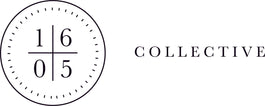Mark Rothko | Beyond the colour
Early influences: the surrealist art of Paul Klee, and the paintings of Georges Rouault.
Born on September 26th, 1903, Mark Rothko would be 118 today. He tragically ended his life at the age of 66, leaving us with 836 known paintings that were created over his life span. This is around 18 paintings a year, more than one per month. Despite his dedication and intense art production, Mark Rothko didn't attend an art school. However, he has always been associated with the American Abstract Expressionist movement of modern art.
Famous for large and imposing paintings at the beginning of his career (the average is 1,5 m tall), he was forced to move to smaller works with acrylic on paper on doctor’s orders when his health was beginning to deteriorate later on in his life.

Rothko also focused on intense warm colours further abstracted into rectangular colour forms during the big part of his artistic path, switching to the gloomier and quieter palette of shades of black and grey in the last years before committing suicide. Regardless of the profound colour palette of the master, as he states, the work he produced wasn't about colour combination at all. As the colour was only an essential tool to communicate drama, mood, spiritual struggle and to elicit an emotional response from the spectator.
"... only in expressing basic human emotions—tragedy, ecstasy, doom, and so on. And the fact that a lot of people break down and cry when confronted with my pictures shows that I can communicate those basic human emotions ... The people who weep before my pictures are having the same religious experience I had when I painted them. And if you, as you say, are moved only by their colour relationship, then you miss the point."
Near the end of his life, Rothko painted a series known as the "Black on Greys", uniformly featuring a black rectangle above a grey rectangle. These canvases have been associated with his depression and suicidal thoughts, although the association has been denied by art critics.
Throughout his life, Rothko consistently intended his works to evoke serious dramatic content, regardless of the colours used in an individual painting. Once a client visited the artist's studio inquiring to purchase a "happy" painting featuring bright colours to which Rothko replied: "Red, yellow, orange-aren’t those the colours of an inferno?"

In November 1958, Rothko spoke at the Pratt Institute in New York discussing the formula of a successful work of art. He highlighted 7 most important points:
1. There must be a clear preoccupation with death—intimations of mortality ...Tragic art, romantic art, etc., deals with the knowledge of death.
2. Sensuality. Our basis of being concrete about the world. It is a lustful relationship to things that exist.
3. Tension. Either conflict or curbed desire.
4. Irony, This is a modern ingredient—the self-effacement and examination by which a man for an instant can go on to something else.
5. Wit and play ... for the human element.
6. The ephemeral and chance ... for the human element.
7. Hope. 10% to make the tragic concept more endurable.
"I measure these ingredients very carefully when I paint a picture. It is always the form that follows these elements and the picture results from the proportions of these elements" - Rothko claimed.

The Rothko Chapel is located adjacent to the Menil Collection and The University of St. Thomas in Houston, Texas. The building is small and windowless. It is a geometric, postmodern structure, located in a turn-of-the-century middle-class Houston neighbourhood.
For Rothko, the chapel was to be a destination, a place of pilgrimage far from the centre of art (in this case, New York) where seekers of Rothko's newly "religious" artwork could travel. Initially, the chapel, now non-denominational, was to be specifically Roman Catholic, as Mark Rothko's design of the building and the religious implications of the paintings were inspired by Roman Catholic art and architecture. Its octagonal shape is based on a Byzantine church of St. Maria Assunta, and the format of the triptychs is based on paintings of the Crucifixion.
The chapel is the culmination of six years of Rothko's life and represents his passion for the transcendent. For some, to witness the paintings in the chapel is to dive into a spiritual experience, something that the artist preached in his lifetime. All 14 works in the chapel became Rothko's final artistic statement to the world. They were finally unveiled at the chapel's opening in 1971. Rothko never saw the completed chapel, and never installed the paintings. On February 28, 1971, the art collector and the founder of the Menil Collection, Dominique de Menil said: "We are cluttered with images and only abstract art can bring us to the threshold of the divine".
